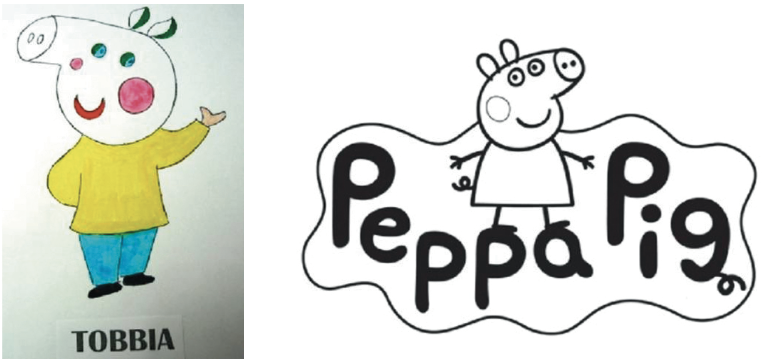Tapir or (Peppa) Pig?
The General Court found that the differences between the marks were not sufficient to dispel a likelihood of confusion, and as such upheld the application for a declaration of invalidity filed by Entertainment One UK Ltd, the owners of the earlier Peppa Pig figurative mark.

Background
Xianhao Pan, the appellant, obtained an EU trade mark registration for the TOBBIA figurative mark in September 2013, covering “clothing, footwear, headgear” in class 25. In April 2015, Entertainment One UK sought to invalidate the registration on the ground of a likelihood of confusion with its earlier Peppa Pig figurative mark, which covers identical goods in class 25.
The EUIPO Cancellation Division rejected the application for a declaration of invalidity in its entirety, and Entertainment One UK appealed to the EUIPO Board of Appeal. The Board of Appeal upheld the appeal, finding that in view of the identity of the goods and the visual and conceptual similarities, the differences between the signs were not sufficient to dispel a likelihood of confusion.
The appellant subsequently appealed to the General Court, arguing that the Board of Appeal had erred in the comparison of the marks and in the global assessment of the likelihood of confusion.
Comparison of the marks
In relation to the visual similarities between the marks, the General Court upheld the Board of Appeal’s finding that the earlier mark and the contested mark are similar to the extent that they represent an illustration of a pig. It was found that the shape of the head and snout are almost identical in both marks, as are the ears, eyes, cheeks, smiley mouth and nostrils.
It was acknowledged that there are some visual differences between the marks, notably the colours used, the clothes and the word elements, however these differences were not considered capable of outweighing the similarities.
The appellant argued that the contested mark represents not a pig but a tapir. The General Court found, however, that even if the public were to identify the animal in the contested mark as a tapir, the earlier mark would also be associated with a tapir due to the visual similarities. Whether the public identifies the animals as two pigs or two tapirs does not therefore alter the assessment of the similarity of the marks.
With regard to the aural similarities, the General Court found that despite the differences between the word elements, there was a certain correlation between the element “peppa” and “tobbia” which was considered sufficient in order to establish a similarity between the marks.
Finally, in relation to the conceptual similarities, the appellant argued that the earlier mark refers to a female pig, whereas the contested mark refers to a male tapir. The General Court, however, agreed with the Board of Appeal’s finding that the average consumer would immediately associate the marks in question with a pig. It was unlikely that the public would associate the contested mark with a tapir since tapirs are not well known animals to the general public.
In view of the above, the General Court found that the Board of Appeal did not err in finding that the contested mark and earlier mark are similar.
Likelihood of confusion & global assessment
The General Court dismissed the appellant’s claim that the Board of Appeal had erred when carrying out its assessment of the likelihood of confusion. In particular, the General Court noted that the specific nature of the clothing sector must be taken into account. The purchase of clothing generally involves a prior visual examination of the marks, and as such the visual similarity is of particular importance in the global assessment of the likelihood of confusion.
Consequently, the appeal was dismissed in its entirety.
In short
The General Court’s decision does not appear surprising given the similarities between the marks. However it serves as a reminder that otherwise obvious differences, such as between the word elements here, will be regarded as insufficient to overcome a likelihood of confusion where there is a high similarity between other elements.
Case details at a glance
Jurisdiction: European Union
Decision level: General Court
Parties: Xianhao Pan v EUIPO (Entertainment One UK Ltd, Astley Baker Davies Ltd)
Date: 21 March 2019
Citation: T‑777/17

